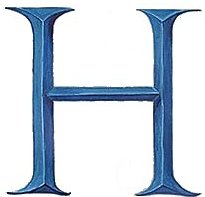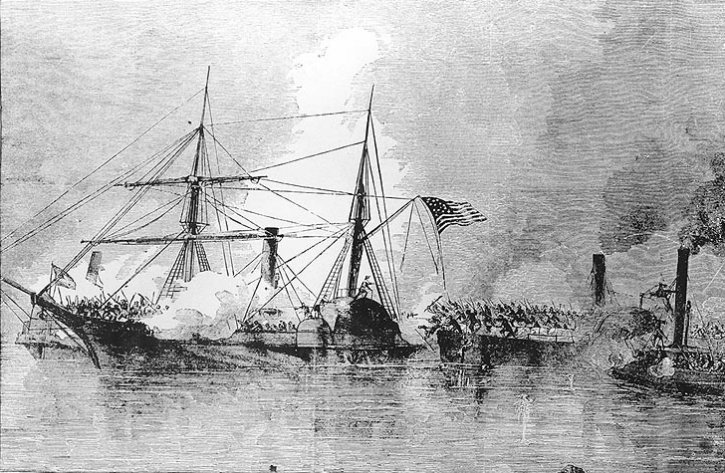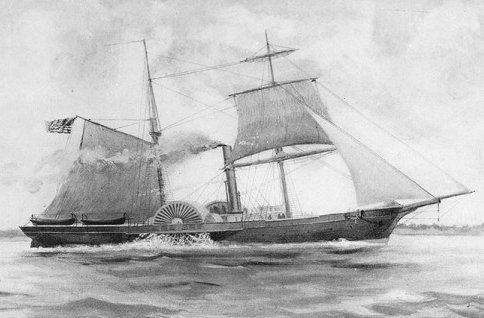|
 ISTORY OF THE CUTTER NAMED HARRIET LANE:
On February 25, 1858, the U.S. Revenue Marine, an agency of the Treasury Department and a forerunner of today's Coast Guard, commissioned the first HARRIET LANE. The Revenue Marine named this ship in honor of President Buchanan's niece and official White House hostess, Miss Harriet Lane. This remarkable lady became the most admired and celebrated woman of her time. Not since Abigail Adams had the President's home seen so brilliant a social life, thanks to her tact, diplomacy and great charm.
ISTORY OF THE CUTTER NAMED HARRIET LANE:
On February 25, 1858, the U.S. Revenue Marine, an agency of the Treasury Department and a forerunner of today's Coast Guard, commissioned the first HARRIET LANE. The Revenue Marine named this ship in honor of President Buchanan's niece and official White House hostess, Miss Harriet Lane. This remarkable lady became the most admired and celebrated woman of her time. Not since Abigail Adams had the President's home seen so brilliant a social life, thanks to her tact, diplomacy and great charm.
The first HARRIET LANE was the Revenue Marine's first successful steam side wheeler built at the then high cost of $150,000. A sleek, Webb Institute designed 180 foot vessel with a 30 foot beam, 700 tons displacement. drawing 10 feet of water HARRIET LANE also had a brigantine auxiliary sail rig. While making her maximum speed of 12 knots, she consumed 1,500 pounds of coal per hour.
HARRIET LANE gleamed so brightly in the Navy's watchful eye that almost immediately after its commissioning the Navy requisitioned her for an expedition to Paraguay. During the 1850's Paraguay rebuffed all U.S. attempts to establish trade agreements. Unfortunately this dispute became violent when Paraguayans resisted U.S. efforts to being "opened" for trade and attacked a U.S. vessel in the Parana River. In response, the U.S. sent a naval expeditionary force.
HARRIET LANE met the Navy's needs for a highly maneuverable vessel of gunboat dimensions that could operate both on rivers and on the ocean. Under the command of Captain Faunce, USR-M. HARRIET LANE remained In the Revenue Marine, but attached to a Navy flotilla of 14 warships. Along with her crew of 82 men and 22 embarked Marines, HARRIET LANE bristled with two 9.inch guns, tour 24, and one 12 pound howitzer.
Paraguay negotiated a trade treaty without a test of gunfire from the flotilla. Early in 1859 the Navy returned HARRIET LANE to the Revenue Marine with this testimonial from the Flotilla commander, Commodore Shubrick, USN; "All the vessels grounded more than once, and it proper that I express my sense of appreciation of the skill and zeal with which Captain Faunce has used this very efficient vessel in extricating us from our difficulties...USS FULTON would have been lost altogether, if not for the assistance afforded by HARRIET LANE.
In the autumn of 1859 HARRIET LANE resumed her Revenue1Marine duties be patrolling off the Florida coast to prevent violations of the slave trade law. In 1860, she returned to New York where she carried out normal cutter duties for about a year. In the summer of 1880, Miss Lane hosted the visiting Prince of Wales on board her namesake for a cruise from Washington to Mount Vernon. The onset of southern rebellion and threats of secession found the Union Navy short of vessels. In a pattern that was to repeat itself in every American conflict since the Civil War, the Navy Department asked again -for the services of the Coast Guard. The Navy liked the HARRIET LANE not only for her handiness and speed, but also for her husband commander Captain Faunce.
In fact. HARRIET LANE was doubtless the most famous cutter and Captain Faunce one of the most distinguished officers of the Revenue-Marine during the Civil War. While the Confederate Army bombarded Fort Sumter. HARRIET LANE patrolled off the bar at the entrance to Charleston Harbor. During the bombardment HARRIET LANE challenged the reluctant steamer NASHVILLE to show her colors, and fired a shot across NASHVILLE'S bow. The NASHVILLE obliged, quickly running up the Union flag. Captain Faunce noted that the action "had the desired effect." Thus HARRIET LANE is credited with firing the first shot from any naval unit in the long and terrible war to preserve the Union. After the fall of Fort Sumter.
HARRIET LANE convoyed troops on the Chesapeake Bay and then joined a Navy squadron to capture Fort Clark and Fort Hatteras, serving as bases for Confederate blockade runners. On August26, 1861, HARRIET LANE sailed down Hatteras Inlet, with two frigates. three gunboats, and transports carrying a thousand troops. In a strategy that would be repeated so often in World War Il, HARRIET -LANE with her 8-inch cannon and four 43 ponders kept the beach and the scrub woods beyond it under fire while boatloads of soldiers were rower ashore. A correspondent from "Harper's Magazine" wrote: HARRIET LANE opened fire. With her rifled guns she did good execution. Several projectiles going into the battery and one going directly through the ramparts The fire was so hot that the enemy went into a bombproof...and soon white flag rose." This battle was the Union's first joint services amphibious.' operation of the war, and it was a major victory for the Union. HARRIET LANE'S actions contributed significantly.
The Revenue-Marine permanently transferred HARRIET LANE to the U.S. Navy in the fall of 1861 when Commander Wainwright. USN. relieve Captain Faunce. USR-M. No longer a Revenue-Marine cutter. HARRIET' LANE served as the Potomac River Flotilla flagship from October 186 until January 1862, escorting troop and supply ship's. Then she served a the flagship for Admiral David Porter's flotilla of 21 tire support vessels.
Equipped with mortars. the flotilla bombarded forts guarding the entrance to the Mississippi River in the first step to capture New Orleans.' The flotilla. as part of Admiral Farraguts fleet, made short work of the Confederate River Defense Force, and the fleet went on to capture New Orleans. HARRIET LANE went on to participate in the capture of Pensacola and the first, but abortive. siege of Vicksburg. Upon returning to New Orleans HARRIET LANE received new orders to join the West Gulf Blockade Squadron.
On October 1, 1862. she sailed into Galveston Bay with the flotilla. Aided by a Union Army Detachment, the flotilla captured Galveston-HARRIET LANE remained in Galveston with a now much smaller Union Army and Navy presence. This set the stage for HARRIET LANE'S final battle under the stars and stripes.

On January 1, 1863 a large Confederate force of infantrymen and river steamers attacked the small Union contingent at Galveston, Texas. HARRIET LANE resisted mightily in a bloody battle fought with guns and cutlasses. During the fierce hand to-hand combat, the commanding officer, Captain Wainwright, was killed. The executive officer, Lieutenant Edward Lea, mortally wounded, he died in the arms of his father, confederate Major A. M. Lea, one of the officers leading the confederate boarding party.Following this bold action, which resulted in the recovery of Galveston by Southern forces, Harriet Lane was employed by the Confederate Army in Texas waters.
Now under Confederate control. HARRIET LANE became embroiled in Confederate politics. The Confederate Army wished to maintain control of her. since they were the ones that had captured her. The Confederate Navy wanted her for a warship. For several months HARRIET LANE, Commanded by Captain W. H. Fleig, gained fame as a blockade runner for the South. In the end, she was sold to a cotton merchant. loaded with cotton, and ordered to sail to Havana. And did not leave until the Civil War was over.
In 1867, a movement began to return HARRIET LANE to the Revenue Cutter Service. Captain Faunce, her skipper, was dispatched to tow HARRIET LANE back to the U.S. After years of neglect made her unfit for duty in the service, she was sold to a Boston merchant. She was renamed the ELLIOT RITCHIE, and was employed in the lumber trade. In May 1884. she sailed for Buenos Aires and was buffeted by hurricane force winds in the Caribbean, where she was abandoned to the sea.

|

